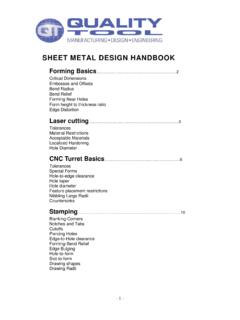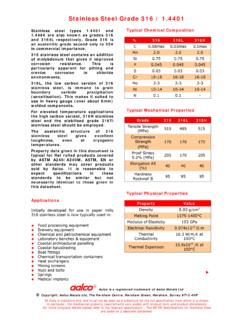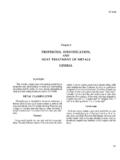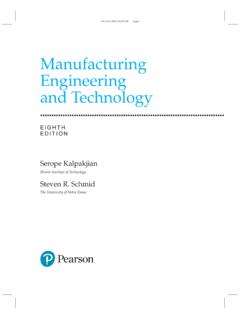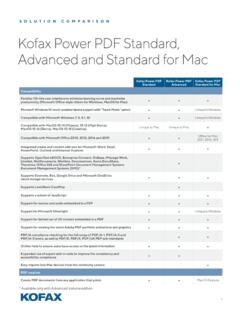Transcription of Stamping Design Guidelines - Bowmannz
1 Stamping Design Guidelines Jonathan Zhang 1 Stamping Design Guidelines Jonathan Zhang Stamping Design Guidelines Jonathan Zhang 2 Stamping Design Guideline Stamping includes a variety of sheet-metal forming manufacturing processes using a machine press or Stamping press, the processes including punching, blanking, embossing, bending, forming, drawing, flanging, and coining. This could be a single stage operation where every stroke of the press create the desired form on the sheet metal part, or could occur through a series of stages.
2 Stamping is an economical way to form metal components with variety of characteristics including strength, durability, and wear resistance. Also they will have good conductive properties and stability. The purpose of this Design guideline is to provide some basic Design concepts which could optimize all the features that a metal Stamping process offers. 1. Material Selection Over-specifying a steel grade and blank thickness are major factors to drive up the cost of metal Stamping . There are many choices of sheet and strip materials that will respond well to metal Stamping and forming processes.
3 However, the price and availability can vary in a wide range, so it has significant impact on the cost and delivery of production. The following are some key factors that should take into consideration when selecting the material and specifying physical characteristics of the material. Material Properties There are many different ferrous and non-ferrous alloys available with different stock thicknesses and tolerances. The non-common alloys will be custom-produced by the steel mills, and they will only be available in the large quantities.
4 It is possible to find someone who is using the material with the same specification for another application, but it would be a hit-or-miss, and it will have impact to the delivery schedules if missed. The quality of steel products has been improved greatly in the recent years. Continuous casting yields a very consistent and homogenous alloy mix. Today s metal materials are more ductile and much more consistent, so the savings can be found from stock warehoused alloys instead of the more specified materials.
5 Steel Thickness Most common steel grades are offered in standard gage thicknesses and tolerances. These sizes are usually readily available as stock items and are generally the best choice when cost and delivery are a major factor. Rolling mills work from master coils, and usually they would have a minimum order quantity somewhere in the truckload range. If the amount of material for your application is much less than the quantity that the steel mill required, steel warehouses would be an alternative way to search.
6 The inventory of a steel warehouse may happen to have the material required to fall within the specified tolerance, but it would make the availability a variable from order to order, similar to the case of non-standard steel grade. Custom made material is also available and can be purchased from the companies who are specializing in re-rolling smaller quantities, but the price of these special rolled materials can be significantly higher than steel mill or steel warehouse price. Stamping Design Guidelines Jonathan Zhang 3 Gage Conversion Chart Gage Steel Stainless Steel Aluminum 7 - - 8 - 9 - 10 - 11 - 12 - 13 14 15 16 17 18 19 20 21 22 23 24 25 26 27 28 - 29 - 30 - 31 - - Flatness of the Coil Material Coiled strip as the raw material form is not flat.
7 As material is unwound off the coil, it retains some of the curvature along its length, called coil set. In addition, the width of the strip usually has a slight arc to it. This is called crossbow. Coil set can be minimized or removed by material handling equipment at the beginning of the metal Stamping process. In other hand, crossbow is much tougher to remove. And generally it will survive to affect the flatness of the finished Stamping . Stamping Design Guidelines Jonathan Zhang 4 2. Stamping Processes The operations associated with Stamping are blanking, piercing, forming, and drawing.
8 These operations are done with dedicated tooling also known as hard tooling. This type of tooling is used in making high volume part of one Design . By contrast, soft tooling is used in processes such as CNC turret presses, laser profilers and press brakes. All these operations can be done either at a single die station or multiple die stations performing a progression of operations, known as a progressive die. The Stamping Equipments The Stamping equipments can be categorized into two types: Mechanical Presses - Mechanical presses has a mechanical flywheel to store the energy, transfer it to the punch and to the work piece.
9 They range in size from 20 tons up to 6000 tons. Strokes range from 5 to 500 mm ( to 20 in) and speeds from 20 to 1500 strokes per minute. Mechanical presses are well suited for high-speed blanking, shallow drawing and for making precision parts. Hydraulic Presses - Hydraulic Presses utilize hydraulics system to deliver a controlled force. Tonnage can vary from 20 tons to 10,000 tons. Strokes can vary from 10 mm to 800 mm ( to 32 in). Hydraulic presses can deliver the full power at any point in the stroke, variable tonnage with overload protection, and adjustable stroke and speed.
10 Hydraulic presses are suitable for deep-drawing, compound die action as in blanking with forming or coining, low speed high tonnage blanking, and force type of forming rather than displacement type of forming. The Anatomy of a Die Cut A normal metal Stamping process (creates a die cut) is to drive a sharpened tool steel punch through the sheet or strip material into a die cavity, where the slug or scrap is ejected. Cutting clearances between the punch and die are closely defined and specified in the die Design stage, based on the requirement of the part.

